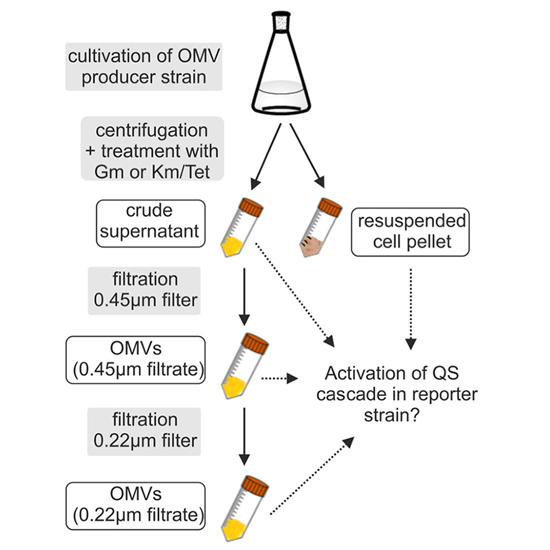Outer Membrane Vesicles Facilitate Trafficking of the Hydrophobic Signaling Molecule CAI-1 between Vibrio harveyi Cells
19-Mar-2018
J. Bacteriol., vol. 200 no. 15 e00740-17, doi: 10.1128/JB.00740-17
J. Bacteriol., online article
Many bacteria use extracellular signaling molecules to coordinate group behavior, a process referred to as quorum sensing (QS). However, some QS molecules are hydrophobic in character and are probably unable to diffuse across the bacterial cell envelope. How these molecules are disseminated between bacterial cells within a population is not yet fully understood. Here, we show that the marine pathogen Vibrio harveyi packages the hydrophobic QS molecule CAI-1, a long-chain amino ketone, into outer membrane vesicles. Electron micrographs indicate that outer membrane vesicles of variable size are predominantly produced and released into the surroundings during the stationary phase of V. harveyi, which correlates with the timing of CAI-1-dependent signaling. The large vesicles (diameter, <55 nm) can trigger a QS phenotype in CAI-1-nonproducing V. harveyi and Vibrio cholerae cells. Packaging of CAI-1 into outer membrane vesicles might stabilize the molecule in aqueous environments and facilitate its distribution over distances.











